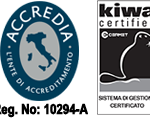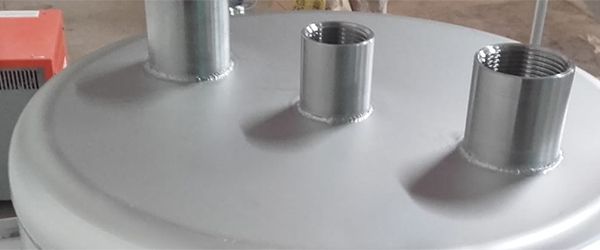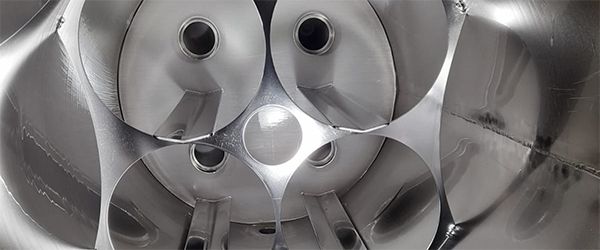Insights and News
What is stainless steel
From Wikipedia, the free encyclopedia
The stainless steels or stainless steels </ span > they are iron-based alloys that combine the mechanical properties typical of steels with peculiar characteristics of resistance to corrosion.
The Italian word that distinguishes them is very inappropriate as they are highly oxidizable that is to say they have the possibility, thanks to the content of alloying elements, essentially with the percentage of chromium, to passivate, that is to cover themselves with an invisible layer of oxides, with a thickness equal to a few atomic layers (3-5 × 10-7 mm), which protects the underlying metal from corrosive attacks. The minimum chromium value in order to speak of stainless steel is 11-12%.
If the percentage of binders is high, we are no longer talking about stainless steels but rather about austenitic stainless alloys.
Types of stainless steel
Stainless steels are traditionally divided, according to their microstructure, into three large families:
- martensitics
- ferritic
- austenitic
In addition to these three categories, there are also two other lesser-known families, whose use is on the rise, for specific uses:
- the austeno-ferritics or duplex
- hardeners by precipitation
Martensitic stainless steel
Martensitic stainless steels are chromium alloys (from about 11 to 18%) with relatively high carbon, containing small amounts of other elements. Typical elements present in them are manganese, silicon, chromium and molybdenum; sulfur can be added if chip breaking is required (at the expense of mechanical characteristics).
Martensitic stainless steel has very high mechanical characteristics and is well machinable, it is the only stainless steel that can harden and therefore increase its mechanical properties (breaking load, yield strength, hardness) by means of heat treatment.
It is known above all with the American nomenclature: for example, chromium steel is AISI 400 series (to remember AISI 410 and 420, with 0,20% & lt; C & lt; 0,40% and Cr = About 13%; AISI 440 with C = about 1% and Cr = 17%); in the UNI nomenclature it has abbreviations such as X20Cr13, X30Cr13, X40Cr14. It is magnetic. It is also known as “series 00” steel.
Martensitic stainless steel is self-hardening, but an excessively tensioned structure arises from the rolling temperature to room temperature; so you always follow the procedure:
- machinability annealing: this is carried out with the isothermal method only when the minimum hardness is desired; otherwise it cools down at a constant speed, choosing it based on the hardness to be obtained (see CCT curves);
- quenching at a temperature of about 1000 ° C and for a time sufficient to dissolve the chromium carbides;
- tempering at different temperatures depending on whether you want to favor hardness, corrosion resistance or toughness.
Martensitic stainless steels are mainly used for their high creep resistance, although their formality and weldability are extremely difficult and their corrosion resistance is lower than that of other families.
The resistance to corrosion is not exceptional because chromium has the lowest content among the categories of stainless steel; also because the martensitic structure has a high density of lattice defects and as such is a work hardened structure therefore more sensitive to corrosive phenomena.
AISI 440 is used for stainless tools (knife, scissors, scalpel, razor blade, injector for internal combustion engines)
Ferritic stainless steel
Like the previous ones, also the ferritic steels are chromium-only stainless steels (varying from about 11 to 30%.
These steels have good mechanical and corrosion resistance. They have a cubic body-centered structure like carbon steels, but they cannot increase their mechanical characteristics by means of heat treatments.
They have a lower carbon content than martensitic. A particularly heat-resistant type contains 26% chromium. Other elements present are molybdenum, aluminum to increase resistance to hot oxidation, sulfur to facilitate workability.
The yield point is very low and, since it is not possible to perform heat treatments due to the absence of critical points, recrystallization or hardening is performed. It is advisable not to heat it above 850 ° C in order not to swell the grain and not to stop cooling between 400 and 570 ° C in order not to incur in brittleness upon tempering .
The basic properties are: moderate resistance to corrosion, which increases with the percentage of chromium as well as by alloying with molybdenum; magnetizable; not hardenable and always to be used after annealing; weldability is poor, as the material that is overheated undergoes the enlargement of the crystalline grain due to chromium.
The most common uses are low-quality crockery or cutlery, sinks, sinks and building finishes. In thin sheets they are used for coatings, plates for naval decks, spillways, chain conveyors, smoke extractors and dust collectors.
Austenitic stainless steel
| % Cr | % Ni | ASTM | UNI |
| 18 | 8 | 304, 316 | X8CN1910, X3CN1911 |
| 18 | 10 | 321, 347, 348 | X8CNT1810,X8CNNb1811 |
| 18 | 13 | 317 | X8CND1712 |
| 23 | 12 | 309 | |
| 25 | 20 | 310 | X8CN2520 |
It is a steel with a cubic structure with centered faces, containing Ni and Cr in such a percentage as to preserve the austenic structure even at room temperature. It is classified according to the percentage of Ni and Cr (see table); in the ASTM classification constitutes the 3XX series.
The basic composition of austenitic stainless steel is 18% Cr and 8% Ni, coded in 18/8 . A percentage of 2-3% of molybdenum ensures better resistance to corrosion (steel 18/8/3 ). The carbon content is low (0.08% max of C), but there are also austenitic stainless steels sweet (0.03% of C max). Austenitic stainless steel can be stabilized with titanium or niobium to avoid a form of corrosion in the weld area (see below for the weaknesses of this type of steel). Considering the considerable percentage of valuable components (Ni, Cr, Ti, Nb, Ta), austenitic stainless steels are among the most expensive among the commonly used steels.
The basic properties are:
- excellent resistance to corrosion;
- ease of cleaning and excellent hygienic coefficient;
- easy to work, forge and weld;
- work harden if cold worked and not by heat treatment;
- in a fully annealed condition it does not become magnetized.
Their austenitic structure (with CFC crystal) makes them immune from the ductile-brittle transition (which manifests itself instead with the ferritic structure, ccc crystal), therefore they retain their toughness up to cryogenic temperatures (liquid He). The grain size, significantly higher than that of ferritic construction steels, makes them resistant to creep; consequently among the steels for construction of pressure vessels, they are those that can be used at the highest temperatures (600 ° C).
Since austenite is paramagnetic, these steels can be easily recognized by having calibrated permanent magnets.
The uses of these steels are vast: pots and domestic services, architectural finishes, abattoirs, breweries, beverage cans and food products; liquefied gas tanks, heat exchangers, pollution control and smoke extraction devices, industrial autoclaves. Their resistance to most aggressive chemicals also makes them very popular in the chemical industry. The same type of steel was used in 1929 for the construction of the spire of the Chrysler Building in New York: the structure was built in the workshop in 4 separate sections and then assembled on top of the building within 90 minutes. The sheen of the spire, 80 years after its construction, testifies to the very high degree of resistance and rust resistance of Nirosta.
Austenitic stainless steels, however, suffer from some limitations:
- the maximum temperature at which they can be treated is 925 ° C;
- corrosion resistance decreases drastically at low temperatures: acids break the oxide film and this causes general corrosion in these steels;
- in the cracks and in the protected areas the quantity of oxygen may not be sufficient to preserve the oxide film, with consequent crevice corrosion;
- the halide ions, especially the anion (Cl-), break the passivating film on austenitic stainless steels and cause the so-called pitting corrosion, defined in jargon pitting corrosion . Another effect of chlorine is SCC (stress corrosion cracking).
The only recommended heat treatment for this class of steels is that of solubilization of the C at 1050 ° C, with rapid cooling (to avoid the permanence in the area between 800 and 400 ° C, where the precipitation of the carbides of Cr).





